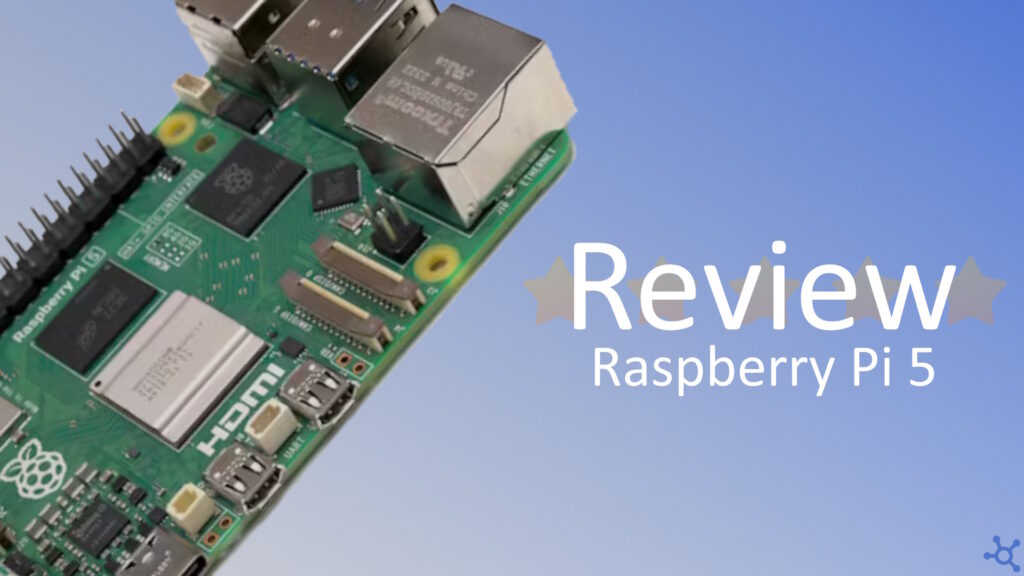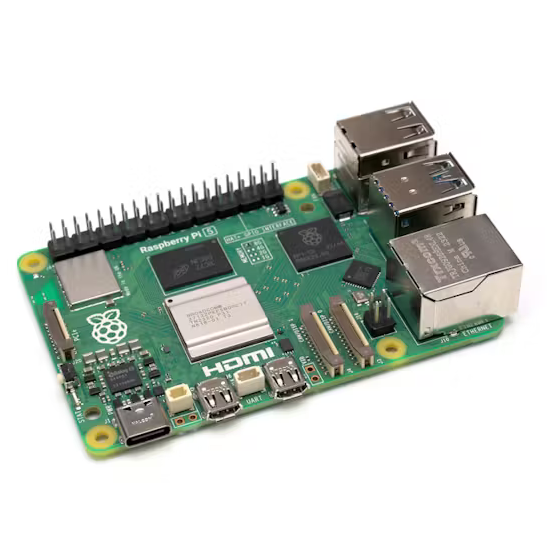0 - Introduction
If you are venturing into the world of microcomputers, you have likely heard of the Raspberry Pi series. What if I told you that you could have an even faster processor, better connectivity options, and more memory, all while maintaining the affordability and versatility that the Raspberry Pi is known for? That’s the Raspberry Pi 5, the perfect microcomputer for DIY projects, educational purposes, and even light server tasks!
1 - Specifications
| Specs | Raspberry Pi 5 |
|---|---|
| Model | Raspberry Pi 5 |
| Processor | Quad-core Cortex-A76 @ 2.4GHz |
| Memory | 8GB LPDDR4X |
| Storage | MicroSD card slot |
| Power Input | USB-C 5V/5A |
| Display Out | 2 x micro-HDMI (supports up to 4K) |
| USB | 2 x USB 3.0, 2 x USB 2.0 |
| Networking | Gigabit Ethernet, 802.11ac Wi-Fi, Bluetooth 5.0 |
| GPIO | 40-pin header |
| Extra | CSI camera connector, DSI display connector |
2 - Improvements since Raspi4
With the diference in price since the last version you might be wondering what changed? Is it enough to make someone want to buy it? I would say yes, it changed a lot, and for the better. Here you will see some benchmarks we did on the pi 4 and 5 with raspberry os 64bits:
Boot time:
In terms of boot time, we noticed an improvement of almost 15 seconds!! We tested 10 ‘cold’ boots each and, in general, the Pi 4 takes 34.8 seconds to boot into the desktop and the Pi 5 takes 20.3. This means that if you need a power efficient project, it is now less obnoxious to shut down and turn it back on to save power (example: car infotainment system).
Time in seconds, lower is better:
Micro SD card speeds:
One component that contributed a lot for the boot time dominance is the new card reader, and as you can see, it also had a huge improvement. In read speed we are looking at more than double the Raspi4, and in write speed it’s almost the same story.
Transfer rate in MB per second, higher is better:
CPU Benchmark:
The Raspi5‘s CPU also had a big improvement over its predecessor, with scores in sysbench single-threaded, 65% better and a multi-threaded difference as large as 67%.
Events per second, higher is better:
GPU Benchmark:
The Raspi5‘s GPU is by far the improvement that most hype generated, because with almost double the power, the amount of gpu related projects you can do also almost doubled! A huge beneficiary of such improvement is Machine Learning. With the new available power, you can train and run models much better.
glmark2 score, higher is better:
3- The Good
One of the standout features of the Raspberry Pi 5 is its upgraded processor, the quad-core Cortex-A76, running at 2.4GHz. This is a significant improvement over previous models, offering better performance for a wide range of applications, from desktop computing to media centers and beyond.
Networking capabilities have been enhanced as well, with Gigabit Ethernet providing faster wired connections, and 802.11ac Wi-Fi and Bluetooth 5.0 offering reliable wireless connectivity options.
4 - The Bad
While the Raspberry Pi 5 brings many improvements, it is not without its shortcomings. One of the main issues is the power consumption, which is higher than previous models. This means that a more robust power supply is needed, and it could lead to higher operating costs over time.
The price increase is also something that cannot go unnoticed, but for the benefits you get over last gen, it is understandable, and the Pi5 is still in the park of the cheaper micro pcs of it’s power.
5 - Should You Buy It?
Absolutely. The Raspberry Pi 5 is an impressive upgrade over its predecessors, offering better performance, improved connectivity, and more versatility. Whether you are a hobbyist looking to explore new projects, an educator needing reliable hardware for teaching, or even a professional seeking a cost-effective solution for specific tasks, the Raspberry Pi 5 is a great choice.
If you found the new Raspberry interesting and want to buy one you can do it here on Amazon.
Thanks for reading and stay tuned for more tech insights and tutorials. Until next time, keep exploring the world of tech!

